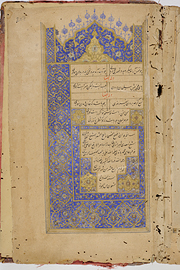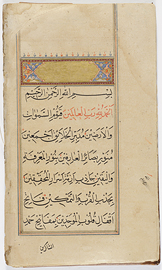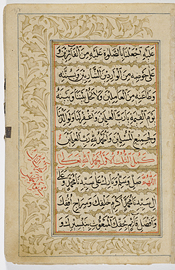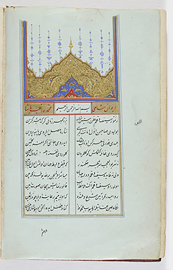“Strive to write elegantly for this will ensure your means of livelihood.”5 Elegant writing and painted decoration (illumination) frequently go hand in hand. Very often the calligrapher is also an illuminator. There are numerous statements to this effect found in colophons of manuscripts, the most common being kataba wa-dhahhabahu (“he penned and gilded it”). The calligrapher can also be responsible for the design of the page, rubricated or polychrome text, the drawing of outlines (for large letters executed in a different color), and frames around the main body of the text. Manuscripts produced for patrons were often elegantly decorated using geometrical and vegetal (arabesque) motifs. The areas especially favored for illumination were the verso of the first and the recto of the second folios, the last page, and the title page, especially in the case of patronage statements. Numerous manuscripts, especially those of the Qurʾan, feature double-page (mirror image) frontispieces, richly decorated incipit pages, and exquisite chapter headings, tailpieces and finispieces. The text itself was often the object of special attention on the part of the calligrapher-illuminator. Here, chapter headings played an important role. Set in a frame with colored background, these headings were often executed in a larger script than the one used for the rest of the composition. In numerous large Qurʾans, for instance, we encounter the use of thuluth script or decorated versions of the New Abbasid style. Manuscripts of Persian and Indian provenance are often characterized by richly illuminated headpieces or entire doublepage openings. Persian illuminators tended to use more lapis lazuli than other colors. On the other hand, we find a lot of brickred ink and yellow gouache in Indian productions, and generous use of gilt in manuscripts of Ottoman manufacture.
5 Caliph ʿAlī ibn Abī Ṭālib (d.661).





